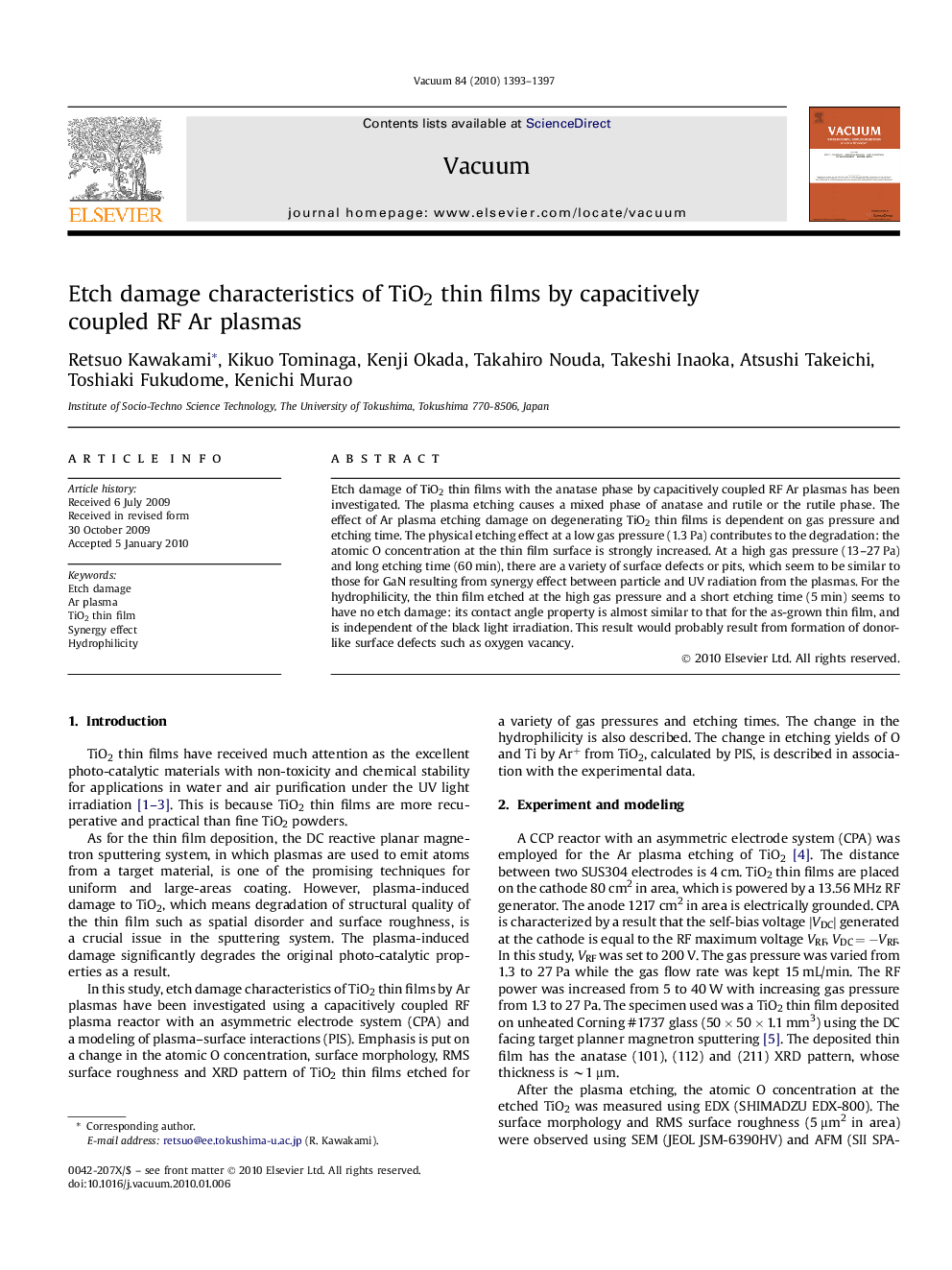| Article ID | Journal | Published Year | Pages | File Type |
|---|---|---|---|---|
| 1689186 | Vacuum | 2010 | 5 Pages |
Etch damage of TiO2 thin films with the anatase phase by capacitively coupled RF Ar plasmas has been investigated. The plasma etching causes a mixed phase of anatase and rutile or the rutile phase. The effect of Ar plasma etching damage on degenerating TiO2 thin films is dependent on gas pressure and etching time. The physical etching effect at a low gas pressure (1.3 Pa) contributes to the degradation: the atomic O concentration at the thin film surface is strongly increased. At a high gas pressure (13–27 Pa) and long etching time (60 min), there are a variety of surface defects or pits, which seem to be similar to those for GaN resulting from synergy effect between particle and UV radiation from the plasmas. For the hydrophilicity, the thin film etched at the high gas pressure and a short etching time (5 min) seems to have no etch damage: its contact angle property is almost similar to that for the as-grown thin film, and is independent of the black light irradiation. This result would probably result from formation of donor-like surface defects such as oxygen vacancy.
